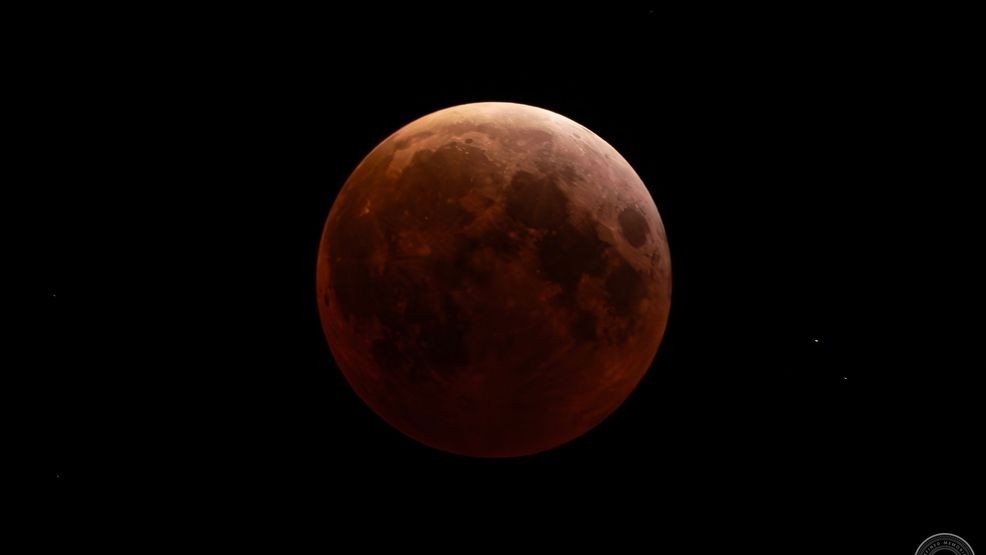Some seek spiritual guidance through meditation. Others get intuitive tattoos.
NEW YORK (TND) — Over 5,000 years ago, a woman’s body was placed with great care in a workers’ cemetery in the ancient Egyptian city of Nekhen.
Her hair was styled in a “moussed-up” mohawk; her head was propped on a linen cushion (a comfort not given to most laid to rest at the non-elite burial ground beside the Wadi Khamsini). The woman — approximately 40 to 50 years old at the time of her death — was interred with four pots surrounding her head, a chunk of resin in her left hand, and an elaborate bird-shaped greywacke palette tucked near her elbows.
She was also buried with a basket, the contents of which would prove fascinating to the Hierakonpolis Expedition team during their excavation of the predynastic site in the early 2000s. It held, they deduced, the belongings of a wise woman or a witch doctor: stone amulets with carved faces, an incense mixture of partially burned nut grass tubers and coniferous wood fragments, and various botanical remains recognized for their medicinal and antiseptic applications.
The presence of bone awls in Burial 333’s basket gave the researchers pause. Was tattooing, they wondered, one of the magico-medical practitioner’s duties?
About as far removed from predynastic ancient Egypt as one can be, tattoo artist Talya Alsberg works among her own collection of curious objects. A statue of the Buddhist goddess Tara and a depiction of the thousand-armed Avalokiteshvara (the Bodhisattva of Compassion) flank a raw selenite bar used to charge crystals. On the shelf below sits a record-keeping spirit guide named Owlina, a polymer clay sculpture of Alsberg’s own creation. Shadow boxes of insects adorn the sage green walls.
Alsberg’s approach to tattooing is more caring, more feminine, and gentler than what’s typical of the average shop with poster-lined walls showcasing flaming skulls and soaring eagles. “Motherly, even,” she said.
In the realm of intuitive tattoos, her mindset is a non-negotiable.
Tattoos shops will leave a mark, literally, on those who enter. But for a teenaged Alsberg growing up in India, frequent visits to watch local artists at work made a lasting impression beyond just the ink on her body. At only 13 years old, Alsberg was certain — she was meant to become a tattoo artist.
Self-described as someone who “must urgently swim against the current,” Alsberg knew the apprenticeship route wasn’t for her. Traveling around the East during her most formative years had given Alsberg an understanding of tattooing outside of the prevailing American perspective, and the practice’s more sacred origins appealed to her far more than the modern male-dominated industry.
Today, stories of misogyny or discrimination are common, but in Indigenous communities throughout history, women have often been the ones wielding the needles and pigment.
Tattoo artists known as Godharins, always women, traveled around central India’s Baiga villages to cover others’ bodies in intricate patterns representing everything from social status to spiritual beliefs, in accordance with the different phases of life; men weren’t permitted to even witness the process. Similarly, the complex motifs believed by the Kayan people of Bali to be pivotal for navigating the afterlife were hand-tapped onto skin only by women. Heavily tattooed Chimú mummies, male and female alike, have been discovered on Peru’s northern coast, with the accompanying suggestion that the women used their knowledge of animal hides to serve as the culture’s primary tattooists.
And recently, Alaska Native women have reclaimed the 10,000-year-old tradition of the Yidiiltoo, a distinctive chin tattoo symbolizing tribal identity and meaningful events in a woman’s life.
Intuitive tattooing is not a revival of Indigenous tattooing traditions, nor is it solely (or even primarily) provided by Indigenous artists. But in its intentional and ritualistic approach, there’s an acknowledgement of these sacred roots that’s missing from most modern-day tattoo shops.
“Intuitive tattooing happens because of Indigenous people,” said Alsberg. “The American revolution that happened with tattooing pulled it away, I think, from its ceremonial practice.”
And Alsberg is pushing it right back.
Alsberg, much like the magico-medical practitioner buried in Nekhen’s HK43 workers’ cemetery, has built up a vast toolkit of techniques to aid others in their healing journeys. Each session in Alsberg’s newly opened private studio begins with what she calls a “gentle” life coaching. “Or a ‘kind’ life coaching,” she posited, offering up the two adjectives that perhaps best align with her mission (“loving” and “compassionate” are close contenders).
From there, she’ll open up her metaphorical basket of healing modalities to determine the best course of action for an individual's needs. Some might receive reiki; for others, it could be a guided meditation or somatic movement.
“[The session] is meant to go within and find what is stuck so we can bring it out and make room for new things,” Alsberg said.
Most intuitive tattoo appointments are structured similarly — an intimate consultation with the artist in a natural-lit space full of crystals and nonthreatening earth tones, followed by some form of energy reading or mindfulness practice from which the design of the tattoo begins to emerge.
Justine Almaraz, founder of Earth Altar Studio in Los Angeles and one of the first artists to attach the “intuitive” label to her work, starts with a card reading and sends every client home with a crystal. At Chrysalis Tattoo Alchemy in Australia, owner Rachel Christensen builds elaborate ritual altars for each personalized ceremony; the ink is “alchemized with vibrational medicine” and “bathed in lunar energy.”
When working with busy New Yorkers, Brooklyn-based artist Priya Handa finds reiki especially beneficial. “You’re carrying all that stuff from outside, whether you came from the subway, whether you just dropped your kids off at school, or whether you have meetings back-to-back after the session,” she said. “Reiki helps you come back into your body.”
The specifics of the process, however, will depend on a person’s unique energy.
“There’s no one recipe for it. Every time I do it, it feels like I’m doing it for the first time,” said Handa.
Raised in the Bay Area, Handa described her Punjabi family as “very artistic, but as a way of life,” referencing their customs surrounding the meals they made and the clothes they wore. From a young age, Handa was drawn to creative pursuits of her own, and an early interest in drawing led to an eventual career as a muralist and tattoo artist.
Numerous factors nudged Handa down the path of intuitive tattooing: the joy of collaboration that accompanied her work as a muralist, her involvement in healing communities and the subsequent recognition of tattoos as a form of ritual, and an intense displeasure at the inappropriate remarks often made by the cisgender men who dominated the industry.
Of Handa’s own tattoos, several came from those typical shops where anyone can wander in after midnight and hand over a design of choice — a sunflower, maybe, or a Cadillac — to a (potentially misogynistic, but not always) male artist.
Intuitive tattooing, by contrast, means a more intentional process, with results that reflects an individual’s energy to the fullest extent. People are far more likely to arrive at an intuitive tattoo appointment with a personal goal in mind or a specific life circumstance to discuss than with a predetermined idea for their new ink. The design, then, is left mostly in the hands of the artist, emerging on a pad of paper or maybe sketched directly on the body.
Some clients will suggest potential motifs on their intake forms or request slight alterations after the mockup is revealed, and a general preference for placement is common. But there are also those who put total trust in the artist to channel the exact imagery they need (Christensen will even blindfold recipients upon request).
On a Sunday morning in her Brooklyn studio, Alsberg closed the meditation with an invitation to wiggle the fingers and toes.
“Welcome back,” she said. “Good job.”
As evidenced by the enormous alien jellyfish cascading down her back, the client on the tattoo bed had worked with Alsberg previously. Alsberg’s style, whether she’s drawing sea creatures, honeysuckles, or celestial possums, is distinctive. Many of Alsberg’s pieces have more eyes than they should — mushrooms with one eye each, mycelium with three, a hand with seven, the aforementioned possum with six — and additional otherworldly elements, like the feathered wings emerging from the head of a veiled woman. And from the flight path of a moth to the spine of a dragon to the jellyfish’s tendrils, the lines are warped and wavy.
Alsberg often refers to “birthing” her designs, regarding the cosmic cows and panther goddesses not as figments of her imagination but as spiritual beings channeled through energy work and intuition. They arrive in this realm of existence, first in Alsberg’s mind and then etched onto skin through a ritual of blood and eternal bonds, ready to live out their earthly tenure as a constant source of protection and guidance.
The recipient is always a co-parent in the birth of an intuitive tattoo. It is, after all, from their own life stories and personal needs that the benevolent creature emerges.
On numerous occasions, a sketch has shocked the client in its profound significance to a not-yet-disclosed component of their life, as if Alsberg somehow managed to make an almost impossibly lucky guess. Even Alsberg has found herself stunned now and again by the clarity of a spirit’s message.
Handa’s designs aren’t typically teeming with extra eyes, but she explores similar motifs to Alsberg, with a penchant for flowers, plants, and winged creatures. And like Alsberg, she believes that the tattoos have a valuable purpose beyond their aesthetic appeal.
“I like to think of the tattoos as a remedy,” said Handa.
Many of the people who meet with her, she explained, are navigating periods of stagnation and seeking ways to move forward. Handa always stresses to her clients that she is not the healer — she is just there to hold space. They already have the power within to heal themselves, and the tattoo acts as a tool to draw it to the surface.
Tattoos, of course, do not have to be of the intuitive type to offer similar benefits. Memorial tattoos can help the bereaved process grief, whereas survivors of physical or sexual trauma might view a tattoo as a way to express bodily autonomy, so long as they feel safe in the presence of their artist. But through the deeply mindful consideration of the process from start to finish, intuitive tattoos maximize the opportunity for healing.
Value also comes via the acknowledgment of Indigenous roots and the chance to perhaps feel some level of connection with the Kayan women who sought protection through the anthropomorphic faces above their wrists, with the Greenlandic Inuit people whose amuletic patterns promised copious resources, with all those who have embraced tattooing as a form of ritual for centuries prior. (And maybe even with the woman buried in Nekhen’s HK43 cemetery, whose basket contents don’t necessarily confirm the ceremonial usage of tattoos in predynastic Egypt but strongly suggest the possibility.)
“How’s that? Doable?” Alsberg asked her client.
Then, not long after: “This okay?”
And again, after the client readjusts her position: “Does that feel good?”
Frequent check-ins became a soundtrack to the session, along with the buzz of the tattoo machine and soft background music filling in the moments of silence. “I always ask a lot if you’re okay, like I’ll be a bit ‘Jewish mom’ about it,” Alsberg said.
As the tattoo machine approached the client’s right shoulder blade, her visible discomfort prompted a sincere apology from Alsberg.
“I genuinely don’t know how we did my whole back. It’s crazy,” the client said.
Alsberg empathized with her client, sharing that it felt mostly fine getting her own back tattooed, but the shoulder blade area was, as she put it, “big ouchies.”
Certainly, getting a tattoo hurts, no matter how much natural light floods the studio or how clearly an artist was able to communicate with benevolent spirits earlier in the session. But both Alsberg and her client agreed that an approach centered around gentleness could, to some extent, mitigate the pain.
“I’m such a big believer in gentleness,” said Alsberg. “I feel like all of us just want love in so many ways, whether it’s with our friends or in the bodega or in any way that we can get it. And I think a practice like this can give you courage to approach that love with more openness.”










